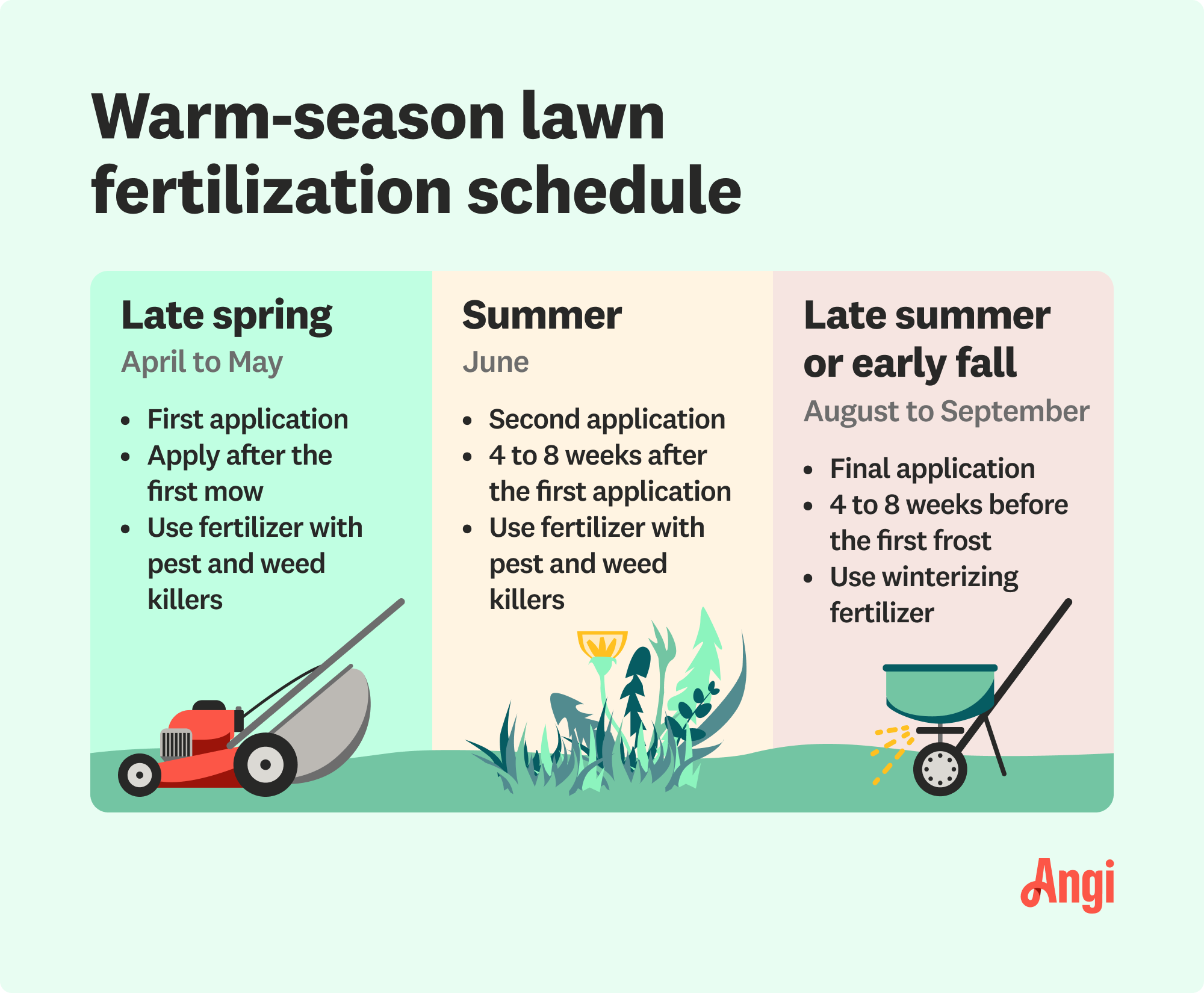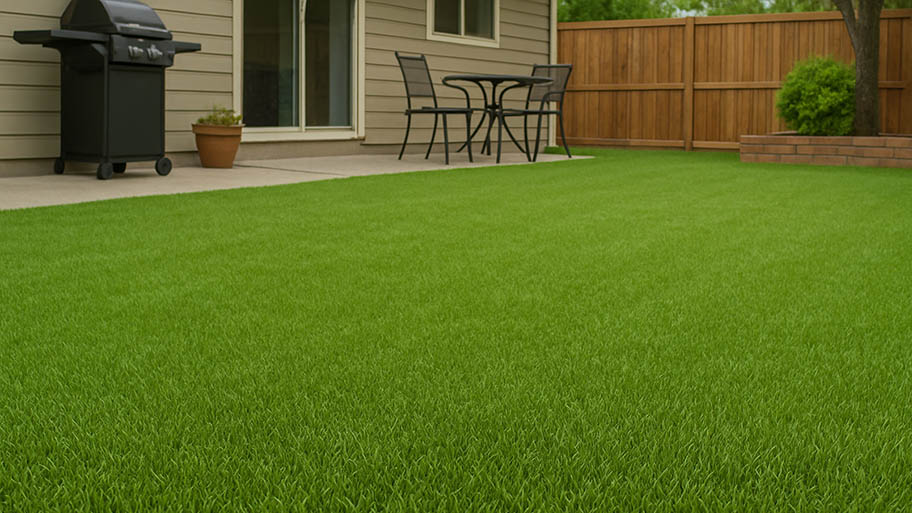
How much it costs to rent a lawn aerator depends on what kind you rent and how long you rent it for. Read on for the full details.
Your neighbors will be green with envy
Lawn burn happens from overfertilization of grass.
Overfertilized grass may appear yellow, brown, or burnt.
Prevention includes slow-release granular fertilizer and aeration.
Putting down fertilizer can help keep your grass vibrant all summer long. But, if you aren’t careful, fertilizer can damage or kill grass. Catching fertilizer damage early and taking steps to fix it, before it gets out of hand, is vital for lawn health. Learn how to prevent fertilizer burn on grass to keep your lawn green and lush.
Applying fertilizer to your grass is a way to nourish grass and promote growth. However, this can become too much of a good thing. If you apply too much fertilizer, it can damage or kill your grass. In addition to overapplication or misapplication, be mindful of what type of fertilizer you purchase and what time of year you apply it. Any misstep can result in a dying, discolored lawn, which is why we recommend hiring a local lawn care professional to ensure high-quality, long-lasting results.
Urea nitrogen fertilizer is primarily made up of urea, a compound with 46% nitrogen. It’s widely used as fertilizer due to its numerous benefits for soil, which promotes plant growth. While urea fertilizer can help grass grow, it leaves your lawn susceptible to burns if applied improperly. The best way to avoid fertilizer burn is by choosing a high-quality brand and following the manufacturer’s instructions for application.
Fertilizer burns occur when your lawn receives more nutrients than it can process, resulting in a sort of backlog that can damage the grass itself. A good analogy is to think of how the body processes vitamins and minerals. Each nutrient has a daily recommended amount for optimal health and wellness, but exceeding that intake can actually be harmful for the body in some cases.
The main nutrients in fertilizer that help grass grow are nitrogen, phosphorus, and potassium. Overfertilization results in excess sodium levels in your soil, which draws water out of your grass and dries it out.

Discoloration of grass is the key thing to look for if you suspect fertilizer burn.
Here are some specific characteristics to look out for:
Brown or yellow grass, especially on the tips
Scorched or burnt grass areas
Black grass roots (healthy roots are long and white)
High sodium levels in soil (getting a soil test is one way to create a showstopping lawn or garden)
Early intervention and preventative measures going forward can both help get your lawn back to looking its best.
These nine strategies can help prevent lawn burn from killing your grass.
Scooping away excess fertilizer if you know you’ve overfertilized is a good way to prevent salt from damaging your grass. Look for areas where fertilizer is visible over or alongside grass, and use your fingers or a small tool to gently remove it.
Short of picking up the excess fertilizer, the only immediate thing you can do if you’ve overfertilized is counter it with water—quite frankly, as much as your grass can hold. Adding water helps dilute the nutrients in fertilizer and may prevent a concentrated dose from killing your grass.
Do this for at least five days in the areas you’re worried about after overfertilization.
Monitoring your grass after overfertilization is key to keeping small problems from becoming large problems. Fertilizer burned grass can make a comeback, but only if you catch the issue before it gets out of hand.
Fertilizer burns may appear as quickly as 24 hours after application.
Granular fertilizers come in pellets with slow-release formulas. Unlike many liquid fertilizers, which are known for fast absorption, this can help prevent fertilizer burns from cropping up. If you keep noticing fertilizer burns, perhaps a switch is needed.
Keep in mind, too, that fertilizer products offer solutions for different types of grass. For example, a crabgrass fertilizer or newly laid grass fertilizer may not be the right type to lay down for your lawn.
Organic fertilizers help grass roots hold onto water longer and release nutrients into soil at a slower pace. Using an organic fertilizer is particularly beneficial if you live in a drought-prone or warm area where grass may suffer in the summer heat. You’ll be less tempted to overfertilize patches that are barren or discolored using organic materials.
Always read labels and follow guidelines for the appropriate amount of fertilizer based on manufacturer instructions. The amount of liquid or granular fertilizer to use per square foot or yard should be listed on the box or bottle.
Hiring a local lawn service company can make the job simple if you’d prefer to outsource the work. Be sure to let them know about any areas where fertilizer burns have been an issue in the past. Some companies use a specific fertilizer, so ask ahead of time if you’d like them to use organic or granular fertilizer.
Aeration helps your grass breathe, which can combat one of the side effects of overfertilization, known as thatching. Thatch is a layer of dead or damaged grass that sits over or alongside healthy grass, stifling it and making it harder to grow.
One common way excess fertilizer winds up in your grass is when spreading fertilizer. The homeowner takes a break, then forgets to close the spreader hopper. A slow stream of fertilizer may fall out into one concentrated area, resulting in issues later on.
Avoiding spills like this will prevent the formation of stressed-out areas of your lawn.
If you know an area of your lawn is prone to discoloration or damage, avoid fertilizing it. Getting it back to normal by regularly watering it is the best way to create healthy, green grass. Next season, consider using less product or skipping that area altogether.
From average costs to expert advice, get all the answers you need to get your job done.

How much it costs to rent a lawn aerator depends on what kind you rent and how long you rent it for. Read on for the full details.

Artificial grass is a low-maintenance alternative to traditional turf. Learn how much artificial grass installation costs and what affects your price.

The cost to reseed a lawn can vary depending on the size of your yard and the condition of the soil. We’ll help you figure out the true cost of reseeding or overseeding your lawn, along with whether or not you should hire a professional.

When it comes to weighing the pros and cons of sod vs. seed, there’s a lot to consider. See how they stack up and which is the best choice for your yard.

A lush moss lawn can be a beautiful, low-maintenance green space that thrives in extreme conditions with little effort.

Does sugar help your lawn? In some cases, yes. Keep reading to learn how you can use this sweet treat to kill weeds and keep the grass green.